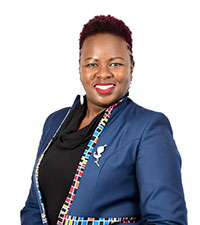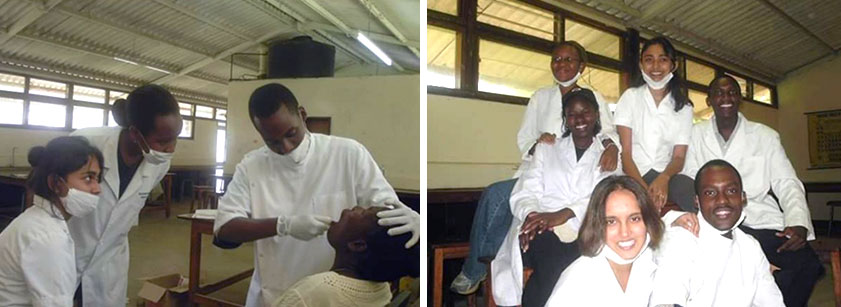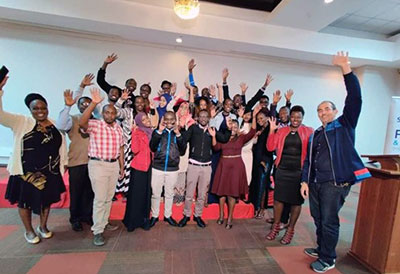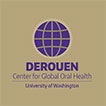
Greetings from the City of champions, Eldoret in Kenya.
My journey in chasing after that elusive smile for my people started back when I was in high school. From that far back I wanted to be a dentist, to be among the chosen few in Kenya to deliver much-needed oral health services. In the year 2000, I joined the only Dental School in Kenya, located at the University of Nairobi, to pursue a degree in Dentistry. I was among the 22 dentists who graduated in the class of 2005. While in 3rd year, I attended an outreach camp in the countryside and what I saw broke my heart. Severe periodontitis, tooth mobility, migrated teeth, halitosis and an abundance of caries. Some didn’t even have teeth! Many of the patients we saw had never seen a dentist. Through my undergraduate studies, I went for many outreach dental camps throughout the country, and the situation was the same – the young and the old from all walks of life streaming in looking for that much needed dental treatment. Unfortunately, most of the time we only offered pain medications and an occasional extraction, with the teams frequently discussing which teeth to intervene. While the smiles were elusive for the patients, they still appreciated our humble interventions since no pain was worth it for them. Access to the opportunity to have that smile was scarce to so many of my country folks. Therein my interest in public health, prevention and oral health promotion was born as it occurred to me that through public health interventions, I could help prevent the advanced disease cases we were managing.
With every extraction I did or helpless case I handled, my interest in oral health research would grow.

During my internship in 2006, I visited the Kenya Medical Research Institute (KEMRI– the largest health research organization in Kenya) to inquire about their research activities in the field of oral health. To my surprise, they did not have an oral health research department despite oral health being a problem in Kenya. Fortunately, KEMRI requested me to write a paper on the burden of oral diseases in Kenya and justify why this should be an agenda for the institute. On completion of this paper and justification, I was offered a job at the Institute with the primary task of driving the oral health research agenda. This I did, though it was a challenging task. Oral health was just not getting the attention it needed! I sat through many scientific reviews for protocols in all other health areas. It was rare to see a protocol on oral health for review.
While at KEMRI I wrote and got approval for several oral health proposals but getting funding for implementation was not easy. Interest in oral health at the Institute began when the World Health Organization (WHO) declared oral trauma and malignancies noncommunicable diseases (NCDs) – NCDs were considered a global threat. With intramural and extramural funding, and together with partners, we were able to initiate various research studies including collating oral tumor burden using data from the Kenya Cancer Registry and prospective cohort studies in persons living with HIV, amongst others. I also undertook an MSc in Public Health to improve my knowledge and skills in research
With time I managed set up and actualize the oral health clinical and research department at KEMRI. The department was equipped with the requisite dental chair, equipment and consumables. It is currently in place, with two dentists. The two dentists have carried on the dream of having oral health research on the table having done research on oral health and preterm birth and oral health and Miraa (KHAT).
In the year 2014, I moved to academia and joined Moi university, the second Dental school in Kenya. Through teaching at the University, I have been able to contribute to training of dentists and have more impact on dental public health. I lecture in the department of Community Preventive Dentistry and Periodontology. During my seven years at the university, I have managed to be impactful through driving health promotion and outreach activities. I chair the collaborations committee through which I secured collaborations that have improved capacity in the school though equipment and skills transfer.

I also participate actively in the Community Based Education and Service program (COBES) a flagship course in the Moi University College of Health Sciences. In the COBES training the students go through community activities through their five academic years of study. In the 1st year the students learn modules on proposal writing and various aspects with regard to community engagement and research. In the 2nd year they are attached to rural health centers where they do community entry and diagnosis research, in the 3rd year the students develop proposals in areas they noted gaps in the communities and finalize these reports in the 4th year. In the 5th year the students are attached to level 5 hospitals where they learn day to day hospital management and administration. The fifth-year students develop proposals and do research on specific gaps they note as they work in the facilities. As faculty, I engage with the students through the various activities in the COBES program.

The oral health disease burden is significant in Kenya, with limited access to quality treatment for the patients. There is opportunity to build capacity in dental public health so as to reduce the burden of disease through research, oral health promotion and preventive programs. The major challenge is in funding for oral health.
Increasing the pool of oral public health specialists through training and increased awareness of funding opportunities may improve the situation. Efforts to have collaborations in oral health would go a long way in addressing the gaps we face.
It is my hope that as time goes by, I will continue to impact in an even greater way on the oral health agenda and indeed improve the research, promotion and prevention of oral health in Kenya and beyond.
